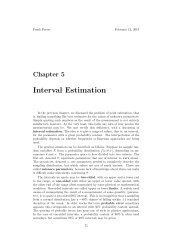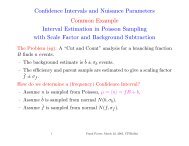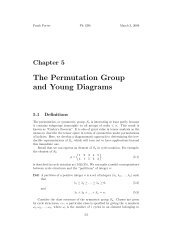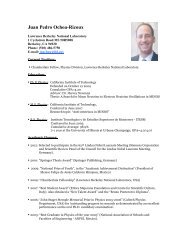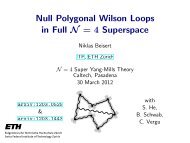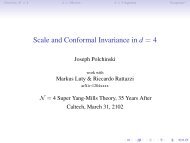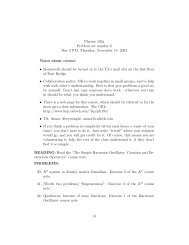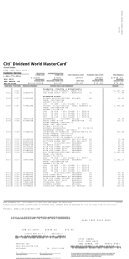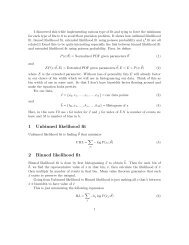1 Introduction 2 Resolvents and Green's Functions
1 Introduction 2 Resolvents and Green's Functions
1 Introduction 2 Resolvents and Green's Functions
Create successful ePaper yourself
Turn your PDF publications into a flip-book with our unique Google optimized e-Paper software.
6 Perturbation Theory with <strong>Resolvents</strong><br />
Let H <strong>and</strong> ¯H = H + V be self-adjoint operators. The choice of symbol is<br />
motivated by the fact that we are especially interested in the case in which<br />
H is a Hamiltonian, <strong>and</strong> ¯H is another Hamiltonian related to the first by the<br />
addition of a potential term. We form the resolvents (with z /∈ Σ(H), Σ( ¯H)):<br />
G(z) =<br />
Ḡ(z) =<br />
1<br />
H − z<br />
(97)<br />
1<br />
¯H − z = 1<br />
H + V − z . (98)<br />
Then, noting that<br />
V = 1<br />
Ḡ(z) − 1<br />
G(z) , (99)<br />
it may readily be verified that<br />
<strong>and</strong><br />
Ḡ(z) = G(z) − G(z)V Ḡ(z) = G(z) − Ḡ(z)V G(z) (100)<br />
Ḡ(z) = G(z) − G(z)V G(z) + G(z)V Ḡ(z)V G(z). (101)<br />
These identities are very important in perturbation theory – if G(z) is known<br />
for Hamiltonian H, then we may learn something about a perturbed Hamiltonian<br />
H + V .<br />
We could try to iterate these identities still further:<br />
Ḡ(z) = G(z) − Ḡ(z)V G(z)<br />
= G(z) − G(z)V G(z) + Ḡ(z)V G(z)V G(z)<br />
=<br />
N∑<br />
[−G(z)V ] n G(z) + (−) N+1 Ḡ(z) [V G(z)] N+1 . (102)<br />
n=0<br />
If V is such that the “remainder” term above approaches 0 as N → ∞, then<br />
we have the Liouville-Neumann Series:<br />
∞∑<br />
Ḡ(z) = G(z) [−V G(z)] n . (103)<br />
n=0<br />
We may state a convergence theorem:<br />
Theorem: Let H <strong>and</strong> V be self-adjoint operators. Let G(z) be the resolvent<br />
for H, <strong>and</strong> let D H ⊂ D V . If<br />
‖V φ‖ < α 1 ‖φ‖ + α 2 ‖Hφ‖, ∀φ ∈ D H , (104)<br />
where α 1 > 0 <strong>and</strong> 0 < α 2 < 1, then the Liouville-Neumann series<br />
converges in operator norm for some open region of the complex plane.<br />
17




